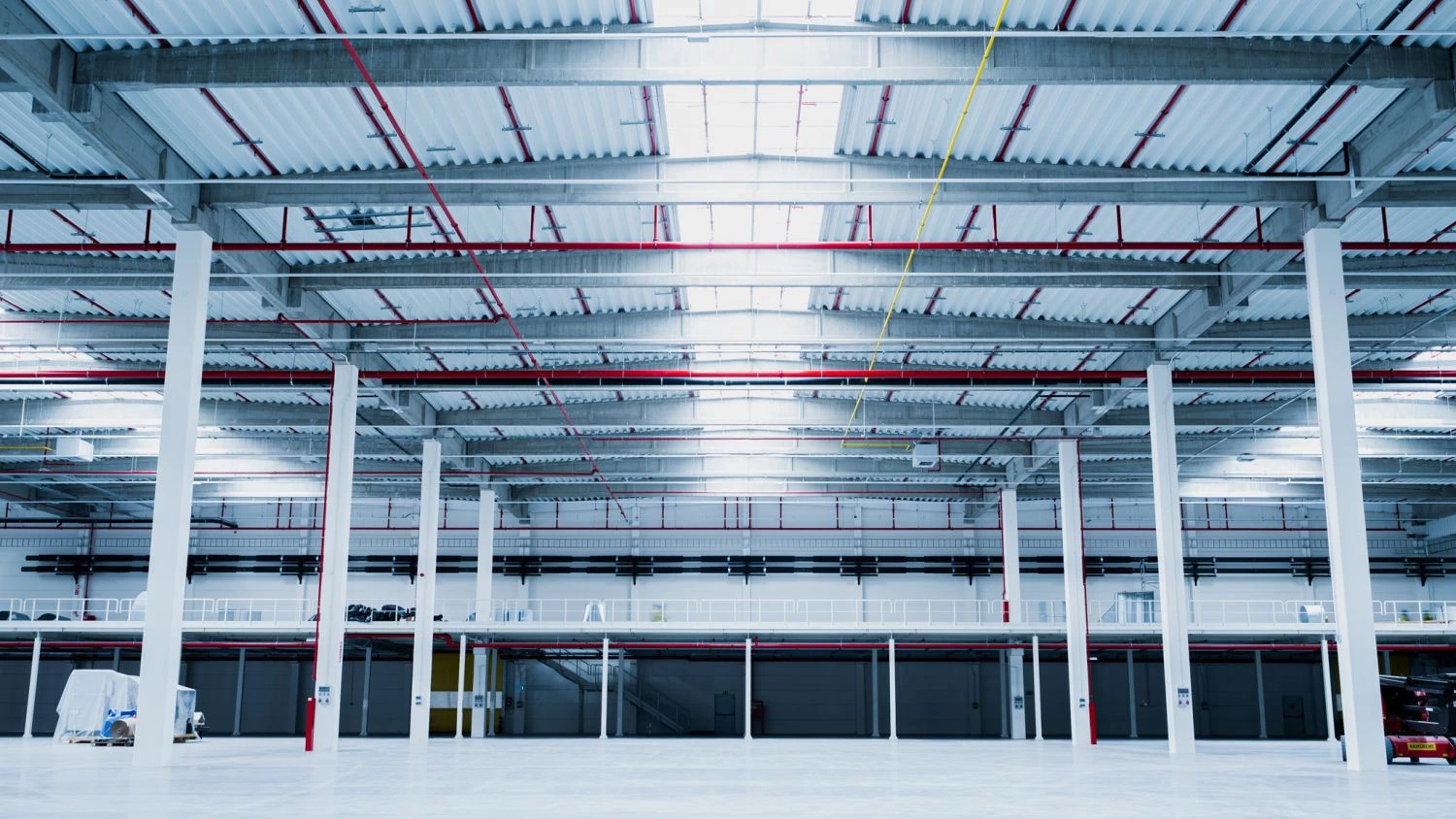
Warsaw is a great place to locate small business units (SBUs). Although small and flexible warehouse modules have been trending for years, it takes several months to secure prime space in such facilities in the Polish capital, say experts of Newmark Polska.
In 2023, warehouse stock in Warsaw (zone 1, defined by the area within the capital’s administrative borders) reached 909,500 sqm, posting a year-on-year rise of 4.5 per cent. Last year’s completions totalled 70,050 sqm - this represented an almost 41 per cent increase from 2022’s 49,800 sqm. Meanwhile, occupier demand declined over the year across Poland with Warsaw’s leasing volume down by 24.3 per cent from the previous year to nearly 150,000 sqm. This pushed the warehouse vacancy rate up to 9.5 per cent at the end of 2023, equating to just over 60,000 sqm.
With nearly 90,000 sqm of new supply scheduled for delivery this year, Warsaw’s total warehouse stock is expected to be near the one million square metre mark by the end of 2024. Q1 take-up hit approx. 40,000 sqm, signifying continued demand for modern warehouses in Warsaw’s zone 1.
Targówek is Warsaw’s construction hot spot
“Warsaw has invariably led the way on the Polish industrial market. It is the largest business centre and consumer market, offering entrepreneurs prestige. Many retailers and manufacturers want to have a warehouse with a showroom for their products here”, says Norbert Kowalczyk, Senior Advisor, Industrial and Warehouse Department, Newmark Polska.
The breakdown of last year’s production and warehouse take-up by sector shows that leasing activity was dominated by retail (23 per cent), courier services (15 per cent), 3PL (11 per cent), distribution (10 per cent) and construction (10 per cent). In 2023, the average lease size in Warsaw’s zone 1 was approx. 1,950 sqm. The largest new leases were signed by Leroy Merlin for 5,900 sqm in P3 Warsaw II and by a confidential tenant for 5,550 sqm in Logicor Okęcie.
“Tenants coming to Warsaw usually know exactly where they want to have a warehouse. The logistics boom that began in 2014 saw developers build en masse on the western outskirts. However, as land became increasingly scarce, they shifted their focus to other locations, including the right bank of Warsaw, with new hot spots for construction activity in recent years including Targówek and Żerań in the Białołęka district. Targówek currently accounts for as much as 81 per cent of the warehouse development pipeline”, comments Janusz Dudek, Associate, Industrial and Warehouse Department, Newmark Polska.
According to data from Newmark Polska, Warsaw’s key warehouse locations are Włochy (mainly Okęcie), accounting for 39 per cent of the Polish capital’s total stock, or 706,400 sqm, and Żerań (Białołęka) and Targówek, with 33 per cent (711,300 sqm) and 17 per cent (214,200 sqm) respectively.
Plenty of options as supply hits record highs
In 2023, new warehouse supply in Warsaw reached 70,050 sqm - second only to 2021’s total of more than 82,000 sqm. The largest completions were City Logistics Warsaw IV (two warehouses with a combined area of more than 37,000 sqm) and LabLogic Warsaw by LemonTree (nearly 14,000 sqm).
“With more than 33,000 sqm of production and warehouse projects in the pipeline, LemonTree is the most active developer in Warsaw, followed by Panattoni (more than 30,000 sqm) and Segro (17,200 sqm, delivered in Q1). The largest project underway is Fresh Warsaw by LemonTree, comprising two warehouses with 19,850 sqm and 13,200 sqm respectively”, says Norbert Kowalczyk.
Small business units are in demand
By contrast, the supply of urban depots has long been constrained amid huge demand.
“To unlock the full potential of development land, developers focused on big-box projects on the large Warsaw market, which enjoyed high absorption rates for years. This resulted in a wide choice of projects offering leasable units of 1,000–1,500 sqm or more. Warsaw is, however, a perfect location for small and flexible warehouse modules starting from 300 sqm and providing modern class A offices accounting for more than 10 per cent of a building’s total area”, says Janusz Dudek. “Demand for small urban depots is growing by the year, but they are hard to find in Warsaw. No wonder clients are lining up, waiting for the completion of two projects in the second half of next year: Peakside’s City Point Targówek in Matuszewska Street, developed on a brownfield site, and Ideal Idea City Park Warsaw in Raszyn, which is actually in zone 2.”
The largest and most sought-after SBUs in Warsaw are City Logistics Warsaw II in Żerań (13,900 sqm) and City Logistics Warsaw Airport I in Okęcie (10,750 sqm).
Demand for small business units is on the rise, so what is preventing developers from investing in such projects? According to Newmark Polska, that’s because they are a lot more complicated to build, lease and maintain compared to traditional big-box warehouses.
“A leading local developer specializing in SBU development in Poland is Ideal Idea, which builds in prime urban locations. It offers small leasable units that can be flexibly combined to suit individual requirements and provide modern office space”, says Norbert Kowalczyk.
Couriers, distributors and start-ups are all waiting
Flexible urban depots are most popular among courier, small and medium-sized companies needing space for packing, as well as e-retailers and large distributors requiring small warehouses in cities. “Thanks to the flexibility in the design of warehouse and office space, SBUs also meet the needs of companies that want to ensure close cooperation between production, warehousing and logistics teams on the one hand and administration, marketing and sales teams on the other,” explains Norbert Kowalczyk. “Small business units are also targeted by many start-ups which are unsure about their business prospects at the beginning of their journey. Once they are on a growth path, they often lease more logistics space in cheaper locations of Warsaw’s zone 2”.
The Warsaw labour market of migrant workers from Asia is growing
Warsaw has the largest labour market in Poland, which is a major incentive for locating warehouses in the Polish capital. However, according to Randstad Polska, it is also a very competitive market due to the high density of logistics developments, which makes recruiting blue-collar workers challenging.
“Warsaw and its suburbs are, however, still attractive locations for investors on account of the availability of highly skilled managers, engineers and technicians”, says Katarzyna Kołacz, Regional Manager, Randstad Polska. Openness to foreign workers is important for business continuity. The number of overseas nationals working in the capital is rising steadily, with a significant growth in workers from Ukraine in particular. According to Warsaw City Hall, there are approximately 105,000 Ukrainians in the Polish capital.
“We must, however, remember that from the point of view of employers, they are different to migrant workers who came to Poland before the war in Ukraine. After the war broke out, many women arrived here with children or seniors to take care of. They are not always fully available for work”, explains Joanna Biederman, Cross Border Staffing Director, Randstad Polska. “The national make-up of foreign workers is also evolving. There are more migrant workers from other countries, including Central Asia. Through our agency, Polish companies have employed citizens of Nepal, Vietnam or the Philippines, among others.”
Better transport, a larger labour market
Randstad also advises on how to recruit employees for logistics centres in the capital. According to Randstad’s Workmonitor, an important benefit that candidates appreciate is supporting commutes by reimbursing transport costs or organizing employee transport. “We estimate that an optimal one-way commute time for blue-collar workers is 30 minutes for those living in Warsaw and 45-50 minutes for those living on the outskirts. Our experience also shows in the case of companies providing efficient transport or located along the network of conurbation railways some employees commute to logistics centres even from faraway localities near the borders of the Lubelskie and Łódzkie provinces”, concludes Katarzyna Kołacz.



